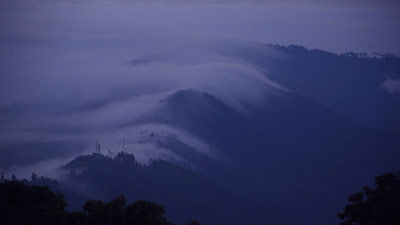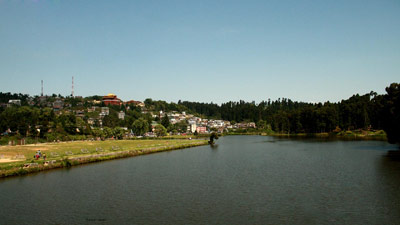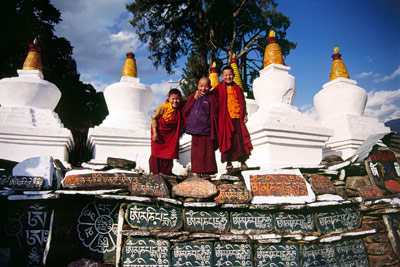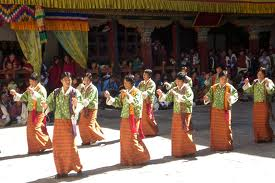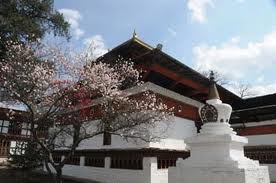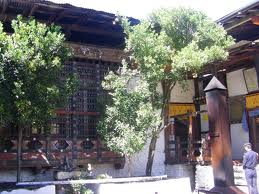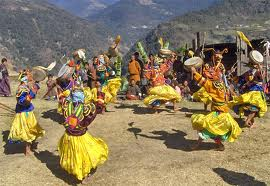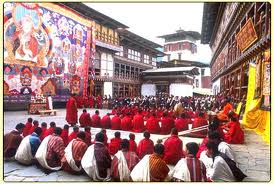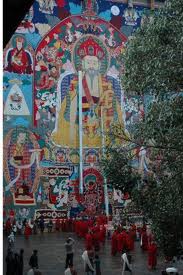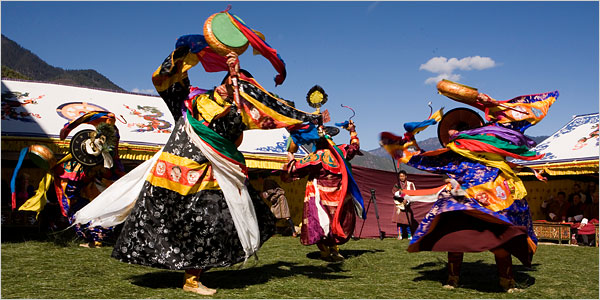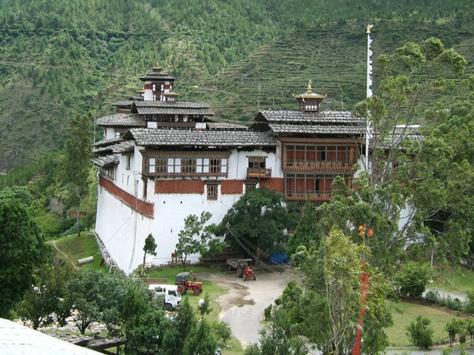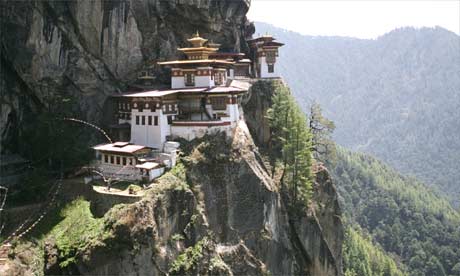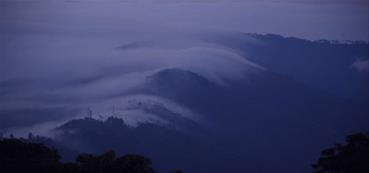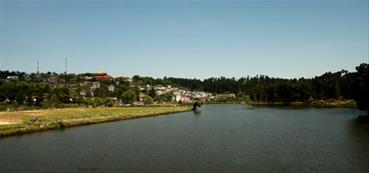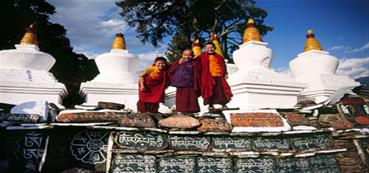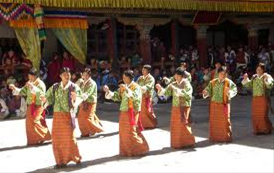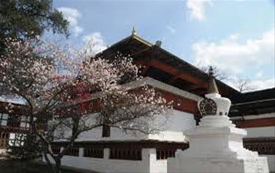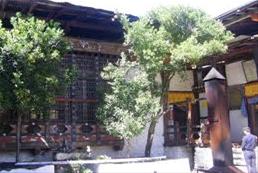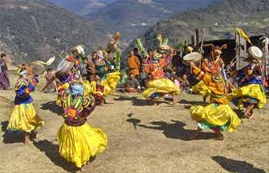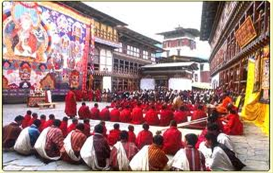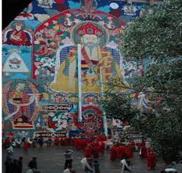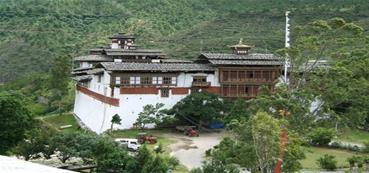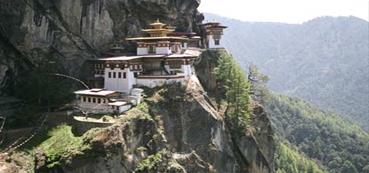Arrival Delhi at International airport by morning flight.
DELHI: New Delhi, the capital and the third largest city of India is a fusion of the ancient and the modern. Standing along the West End of Gangetic Plain, the capital city, Delhi, unwinds a picture rich with culture, architecture and human diversity, deep in history, monuments, museums, galleries, gardens and exotic shows. Comprising of two contrasting yet harmonious parts, the Old Delhi and New Delhi, the city is a travel hub of Northern India.
Narrating the city's Mughal past, Old Delhi, takes you through the labyrinthine streets passing through formidable mosques, monuments and forts. You will also discover lively and colorful bazaars that boast to cater all sorts of good and items at mind-blowing prices amidst a barely controlled chaotic ambience. The imperial city of New Delhi displays the finely curved architecture of British Raj. It generates a mesmerizing charm reflecting well-composed and spacious streets under the shade of beautifully lined avenues of trees and tall and imposing government buildings.
Meet our representative who will transfer you to your hotel.
(Standard check-in/check-out time is 1200 Hrs.)
Upon arrival, welcome with garlands.
Afternoon visit the Raj Ghat (Gandhi’s Memorial) and Jama Masjid (Grand Mosque)
Raj Ghat: is a memorial to Mahatma Gandhi. It is a black marble platform that marks the spot of Gandhi's cremation on 31 January, 1948. It is left open to the sky while an eternal flame burns perpetually at one end. It is located on the banks of the river Yamuna in Delhi in India. A stone footpath flanked by lawns leads to the walled enclosure that houses the memorial. Two museums dedicated to Gandhi are located nearby. The memorial has the epitaph Hē Ram, (literally 'O' Ram', but also translated to 'O God'), believed to be the last words uttered by Gandhi. The memorial was designed by Vanu G. Bhuta. It was originally designed to reflect the simplicity of Mahatma Gandhi's life. The design that won the Govt. of India invitational competition had the black marble slab surrounded by red earth as none of Gandhiji's ashram residences had any "English lawn". The memorial has gone through a number of design changes since then. A few at the behest of Jawaharlal Nehru, the first Prime Minister of independent India.
Jama Masjid (Mosque): This great mosque of Old Delhi is the largest in India, with a courtyard capable of holding 25,000 devotees. It was begun in 1644 and ended up being the final architectural extravagance of Shah Jahan, the Mughal emperor who built the Taj Mahal and the Red For. The highly decorative mosque has three great gates, four towers and two 40 m-high minarets constructed of strips of red sandstone and white marble. Travelers can hire robes at the northern gate. This may be the only time you get to dress like a local without feeling like an outsider, so make the most of it.
Followed by enjoy a Rickshaw ride through Chandni Chowk.
Overnight at the hotel
Breakfast at hotel
Transfer to airport to board flight to Bagdogra
Meet & Greet at Bagdogra airport later transfer to Darjeeling by surface
Darjeeling is internationally famous for its tea industry and the Darjeeling Himalayan Railway, a UNESCO World Heritage Site. The tea plantations date back to the mid-19th century as part of a British development of the area. The tea growers of the area developed distinctive hybrids of black tea and fermenting techniques, with many blends considered among the world’s finest. The Darjeeling Himalayan Railway connecting the town with the plains was declared a World Heritage Site in 1999 and is one of the few steam engines still in service in India.
Arrival at Darjeeling and check-in at hotel
Overnight at hotel
Early morning you visit the Tiger Hill & Ghoom Monastry
Tiger Hill is 13 kms from Darjeeling and one can see beautiful sunrise and Himalayan Range like Kanchanjunga, Mount Everest etc. Normally this trip is done early morning before breakfast.
Ghoom Monastery - This is oldest Monastery in the area which was built in 1875 and one can see the image of Mythey Buddha 15ft. height on the way back from Tiger Hill
Breakfast at hotel
Morning visit Himalayan Mountaineering Institute & Museums.
Himalayan mountaineering Institute /Padmaja Naidu Himalayan Zoological Park (Closed On Thursday) - This institute was started in Darjeeling when Tenzing Norgay climbed Everest to give training to learn Mountaineering and other adventure sports related to mountaineering.In the Institute one can see equipment etc.used by Mr. Tenzing Norgay. Attached to institute one can visit Himalayan Zoological Park where one can see Himalayan animals like Snow Leopard, Tibetan Wolf, Tibetan Yak, Himalayan Black Bear and several varieties of birds.
In the evening enjoy a joy ride on board the Toy Train.
Toy Train: The spectacular landscape unfolds as the 2-foot gauge Darjeeling Himalayan railway, opened in 1881, labors at about 10 mph criss-crossing the road. It has tiny 4-wheel locomotives (some over 100 years old) like living legends. One can experience the sound, smell and romance of a bygone era. DHR is a work of genius and technological achievement of 1881. It has social and cultural importance. It is beautiful and has outstanding universal appeal. Based on its unique features, it is considered to be of lasting significance to mankind.
Overnight at Hotel
Breakfast at hotel
Leave for Gangtok by Car
Gangtok is the capital and largest town of the Indian state of Sikkim. Gangtok is located in the Shivalik Hills of the eastern Himalayan range. The town, with a population of thirty thousand belonging to different ethnicities such as Nepalis, Lepchas and Bhutia, is administered by various departments of the Government of Sikkim.
Gangtok rose to prominence as a popular Buddhist pilgrimage site after the construction of the Enchey Monastery in 1840. In 1894, the ruling Sikkimese Chogyal, Thutob Namgyal, transferred the capital to Gangtok. In the early 20th century, Gangtok became a major stopover on the trade route between Lhasa in Tibet and cities such as Kolkata (then Calcutta) in British India. After the British granted India its independence in 1947, Sikkim chose to remain an independent monarchy, with Gangtok as its capital. In 1975, after the integration with the union of India, Gangtok was made India's twenty-second state capital.
Arrival at hotel and check-in at hotel
Afternoon at leisure
Overnight at the hotel
Breakfast at hotel
Full day city tour of Gangtok visiting Rumtek Monastery, Namgyal Institute of Tibetology &
Enchay Monastery
Rumtek Monastery: -24 Kms. From Gangtok is the awe –inspiring Rumtek Monastery the World Dharma chakra Centre and the seat of His Holiness, the Gyalwa Karmapa, who is the head of the Kagyupa order of Tibetan Buddhism. Behind the main monastery is the lavishly decorated Karmae Nalanda Institute of Buddhist Studies, which attracts students from the world over. Opposite the entrance to the Institute is a small hall featuring a beautiful jewel studded Chorten the Golden Stupa, which contains the ashes and remains of His Holiness the XVI Gyalwa Karmapa. According to legend, it is believed that after years of meditation, the first Karmapa was said to have been visited by ten thousand fairies who came to congratulate him, each of whom offered a strand of her hair as a gift. These were said to have been woven into a black hat, which was passed down and is still at the Rumtek Monastery today. It is said that unless held on to by the wearer (who of course, cannot be anyone else but the Karmapa) or kept in a box, the hat would fly away. the Do Drul Chorten, built to commemorate the victory of good over evil and the Jhang Chub Chorten, built in the memory of Thrukshik Rinpoche, an ardent devotee, a great piritualist and interpreter of Buddhism. Near the Chorten are housed two giant statues of Lord Buddha and Guru Padmasambhava, also known as Guru Rimpoche, the patron saint of Sikkim
The Enchey Monastery: -Perched on a ridge above Gangtok, the Enchey Monastery is nestled within lush woods with a spectacular view of Gangtok town. Built in 1910 on the site of the hermitage of the great tantric saint, Lama Drutob Karpo, who was renowned for his powers of levitation, this monastery houses the monks of the Nyingmapa Order of Tibetan Buddhism.
Namgyal Institute Of Tibetology: -Amidst a serene surrounding of oak, birch and ash lies the unique organization established in1958. Built in traditional style, the Namgyal Institute of Tibetology promotes research in Mahayana Buddhism and the language and tradition of Tibet. It has one of the world’s largest collections of rare books and manuscripts on Mahayana Buddhism. The Institute also has a retail outlets where related books and commercially produced religious art and craft of Tibet can be bought.
Overnight at the hotel
Breakfast at hotel
Leave for Chalsa by Car
Chalsa is a small town situated just on the foot of the Himalayas in the Duars in Jalpaiguri district in West Bengal. This small town is surrounded by hills, tea gardens, rivers and forests. One part of the town is surrounded by Gorumara National Park and other part with Chapramari Wildlife Sanctuary. This small town was known as Queen of Duars in British India. Nearby forests are residence of a good collection of elephants and rhinos.
On arrival at Chalsa, check in at hotel
Afternoon at leisure
Overnight at hotel
Breakfast at hotel
In time leave for Bhutan Border (Phuntsholing). From there our Bhutan representative will drive you to Thimpu.
Bhutan: A paradise lost since medieval times, bathing in its pristine beauty, a heavenly adobe in the heart of the vast Himalayas is The Kingdom of Bhutan. The name Bhutan appears to derive from the ancient Indian term Bhotanta which means the end of the land . Mystery surrounds Bhutan’s distant past. It was in the early middle ages that Buddhism blossomed in Bhutan. Shabdrung Ngawang Namgyal, a Tibetan lama, designed the present system of intertwinder religious and secular government in 1616.
Himalayan peaks can be clearly viewed in autumn and winter. Bhutan’s flora is some of the most spectacular in all the Himalayas.While urban settlements have sprung up with the process of modernization, the majority of Bhutanese people still live in the small rural villages.
En-route vist Kharbandi Gompa, around 04kms ahead of Phuentsholing.
The beautiful monastery situated in garden of tropical plants and flowers. The monastery contains paintings depicting scenes from the life of Buddha and statues of Shabdrung Ngawang Namgyal and Guru Rimpoche. From the monastery garden there is a splendid view of Phuentsholing and plains of West Bangal and their tea gardens beyond.
Continue your drive to Thimphu.
This entire drive is very pleasant with numerous scenic spots en route.
Lunch would be served en-route.
Five miles before Thimphu visit Simtokha Dzong,
Check-in and Overnight at hotel.
Breakfast at Hotel
Morning visit of Thimpu city includes the National Library, which holds a vast collection of ancient Buddhist texts and manuscripts, some dating back several hundred years, as well as modern academic books mainly on Himalayan culture and religion:
Handicrafts Emporium; it displays wide assortment of beautifully handwoven and crafted products.
Textile and Folk Heritage Museum: These museums, both of which opened in 2001, provide fascinating insights into Bhutanese material culture and way of life.
In the afternoon visit Trashichhodzong, the beautiful fortress/monastery which houses Secretariat building, King's Throne room and other government's offices. It is also the summer residence of Chief Abbot.
Memorial Chorten; the beautiful stupa built in the memory of Bhutan's third King. The paintings and statues inside the monument provide a deep insight into Buddhist philosophy.
.
Overnight at the hotel.
Breakfast at hotel
Leave for Punakha via Wangdue Valley & Dorchula Pass
Check-in and Overnight at hotel
Breakfast at hotel
Morning excursion to Chimi Lakhang
Chimi Lhakhang. Situated on a hillock in the centre of the valley, this temple is dedicated to Lama Drukpa Kuenley, who in the late 15th century used humour, songs and outrageous behaviour to dramatise his teachings and due to this also known as ‘Divine Madman’. This temple is also known as the temple of fertility. It is widely believed that couples who do not have children and wanting one,are usually blessed with a child very soon, once they pray here. It is about 30 minute walk across field from the road to the temple. The trail leads across rice fields to the tiny settlement of Pana, meaning ‘field’. It then follows a tiny stream downhill to Yoaka and across more fields before making a short climb to Chimi Lhakhang.
Afternoon visit of Punakha Dzong - Built strategically at the junction of Pho Chhu and Mo Chhu rivers in 1637 by Shabdrung Ngawang Namgyal to serve as the religious and administrative centre of the region, Punakha Dzong has played an important role in Bhutan’s history. Damaged by four catastrophic fires and an earthquake, the Dzong has been fully restored by the present King.
Overnight at hotel.
Breakfast at the hotel
Leave for Paro by road enroute visit Wangdue: Typical small Bhutanese town.
Paro - is a historic town with many sacred sites and historical buildings scattered through the area. In addition, the Paro Valley is wide and verdant and is recognized a one of the most beautiful in all Bhutan. However, apart from the main street (which is constructed of traditional wooden structures), the bazaar area is a nondescript hodgepodge of concrete buildings that is totally bereft of charm and character. Along with Jakar and Punakha, Paro forms the 'golden triangle' of popular tourist destinations in Bhutan.
Check-in at hotel
Afternoon visit the Drukgyel Dzong or the Fort of Drukpa victory and Kyichu Lhakhang,
Drukgyel Dzong: This Dzong, with a delightful village nestling at its foot, was built in 1646 by Shabdrung Ngawang Namgyal to commemorate his victory over the Tibetan invaders. Historically and strategically this Dzong withstood all its glory and was featured in 1914 vide National Geographic magazine. The glory of DrukgyelDzong remained even when it was destroyed by fire in 1951. On a clear day, one can see the commanding view of Mount. Chomolhari from the village, below the Dzong.
Kyichu Lakhang : It is one of the oldest and most sacred shrines of the Kingdom dating back to 7th century (the other is Jambey Lhakahng in Bumthang). The lhakhang complex is composed of two temples. The first temple was built by Tibetan King, Songtsen Gampo in the 7th century and in 1968, H.M. Ashi Kesang, the Queen Mother of Bhutan, built the second temple in same original pattern.
Overnight at hotel
Breakfast at hotel
Morning excursion to Taktshang Lakhang
Taktshang Monastery (5hrs hike): It is one of the most famous of Bhutan’s monasteries, perched on the side of a cliff 900m above the Paro valley floor. It is said that Guru Rinpoche arrived here on the back of a tigress and meditated at this monastery and hence it is called ‘Tiger’s Nest’. This site has been recognized as a most sacred place and visited by Shabdrung Ngawang Namgyal in 1646 and now visited by all Bhutanese at least once in their lifetime. On 19 April, 1998, a fire severely damaged the main structure of building but now this Bhutanese jewel has been restored to its original splendor.
Afternoon visit Paro city visit Ta Dzong,
Ta Dzong (Sun, Mon & govt holiday closed): once a watchtower, built to defend Rinpung Dzong during inter-valley wars of the 17th century, Ta Dzong was inaugurated as Bhutan's National Museum in 1968. It holds fascinating collection of art, relics, religious thangkha paintings and Bhutan's exquisite postage stamps. The museum circular shape augments its varied collection displayed over several floors.
Afterwards, walk down a hillside trail to visit Rinpung Dzong.
Rinpung Dzong, which has a long and fascinating history. Built in 1646 by Shabdrung Namgyal , the first spiritual and temporal ruler of Bhutan, the Dzong houses the monastic body of Paro, the office of the Dzongda (district administrative head) and Thrimpon (judge) of Paro district. The approach to the Dzong is through a traditional covered bridge called NemiZam. A walk through the bridge, over a stone inlaid path, offers a good view of the architectural wonder of the Dzong as well as life around it. It is also the venue of ParoTshechu, held once a year in the spring.
Overnight at hotel
Breakfast at hotel
Further full day excursion to Haa Valley.
En-route take a short stop at Chelela pass (Appox. 3900 M.)
Overnight at hotel
Breakfast at hotel
Leave for airport to board flight to Delhi
Meet and greet at airport and transfer to hotel
Check in at hotel
Afternoon visit of New Delhi includes visit of Kutub Minar, drive past the India Gate and Government Buildings and the Diplomatic area.
Qutab Minar is a soaring, 73 m-high tower of victory, built in 1193 by Qutab-ud-din Aibak immediately after the defeat of Delhi's last Hindu kingdom. The tower has five distinct storeys, each marked by a projecting balcony and tapers from a 15 m diameter at the base to just 2.5 m at the top. The first three storeys are made of red sandstone; the fourth and fifth storeys are of marble and sandstone. At the foot of the tower is the Quwwat-ul-Islam Mosque, the first mosque to be built in India. An inscription over its eastern gate provocatively informs that it was built with material obtained from demolishing '27 Hindu temples'. A 7 m-high iron pillar stands in the courtyard of the mosque. It is said that if you can encircle it with your hands while standing with your back to it your wish will be fulfilled.
India Gate - At the centre of New Delhi stands the 42 m high India Gate, an "Arc-de-Triomphe" like archway in the middle of a crossroad. Almost similar to its French counterpart, it commemorates the 70,000 Indian soldiers who lost their lives fighting for the British Army during the World War I. The memorial bears the names of more than 13,516 British and Indian soldiers killed in the Northwestern Frontier in the Afghan war of 1919.
Overnight at the hotel
Breakfast at hotel
In time transfer to Delhi International Airport for the flight back home.


